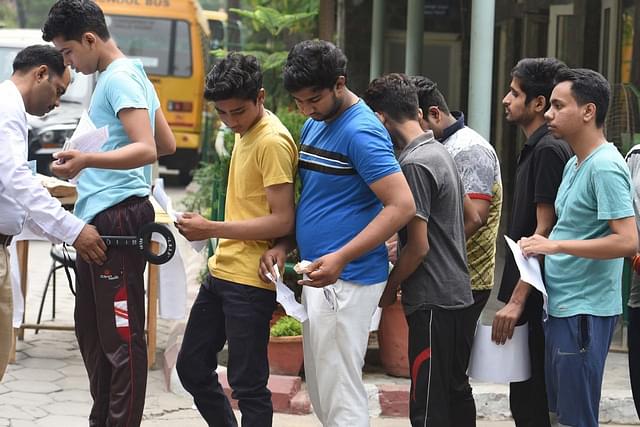News Brief
Two Teachers Detained In Maharashtra By ATS In NEET-UG Paper Leak Case— All About It

Students being frisked before entering the NEET exam centre (Representative Image)
The Maharashtra Anti-Terrorism Squad (ATS) detained two teachers from the Latur district late Saturday (22 June) night in connection with alleged irregularities in the National Eligibility cum Entrance Test (NEET), a crucial medical entrance exam.
The two teachers, Sanjay Tukaram Jadhav and Jalil Umarkhan Pathan, who teach at a government-run school in Latur, were arrested by a team of the ATS's Nanded unit.
They used to teach in Zilla Parishad schools and also run private coaching centres in Latur.
Earlier on Saturday, the Central Government removed National Testing Agency (NTA) Director General Subodh Singh from his position and transferred the investigation of NEET-UG irregularities to the Central Bureau of Investigation (CBI).
In addition to the probe handover, the Education Ministry established a seven-member panel headed by former ISRO chief K Radhakrishnan to review the NTA's functioning and recommend necessary reforms in the examination system.
“We stand for transparent, tamper-free, and zero error examination. A panel has been formed on exam reforms, strict action has been taken against officials, and the case has been handed over to the CBI,” Union Education Minister Dharmendra Pradhan stated.
“Students' interest will be safeguarded at any cost," he added.
These steps come amid widespread litigation and protests across the country concerning the alleged irregularities in the NEET-UG exam.
Students have raised concerns over a purported question paper leak and the contentious awarding of grace marks to over 1,500 candidates.
The grace marks were subsequently revoked, and the affected students were offered a re-test.
Support Swarajya's 50 Ground Reports Project & Sponsor A Story
Every general election Swarajya does a 50 ground reports project.
Aimed only at serious readers and those who appreciate the nuances of political undercurrents, the project provides a sense of India's electoral landscape. As you know, these reports are produced after considerable investment of travel, time and effort on the ground.
This time too we've kicked off the project in style and have covered over 30 constituencies already. If you're someone who appreciates such work and have enjoyed our coverage please consider sponsoring a ground report for just Rs 2999 to Rs 19,999 - it goes a long way in helping us produce more quality reportage.
You can also back this project by becoming a subscriber for as little as Rs 999 - so do click on this links and choose a plan that suits you and back us.
Click below to contribute.
Latest